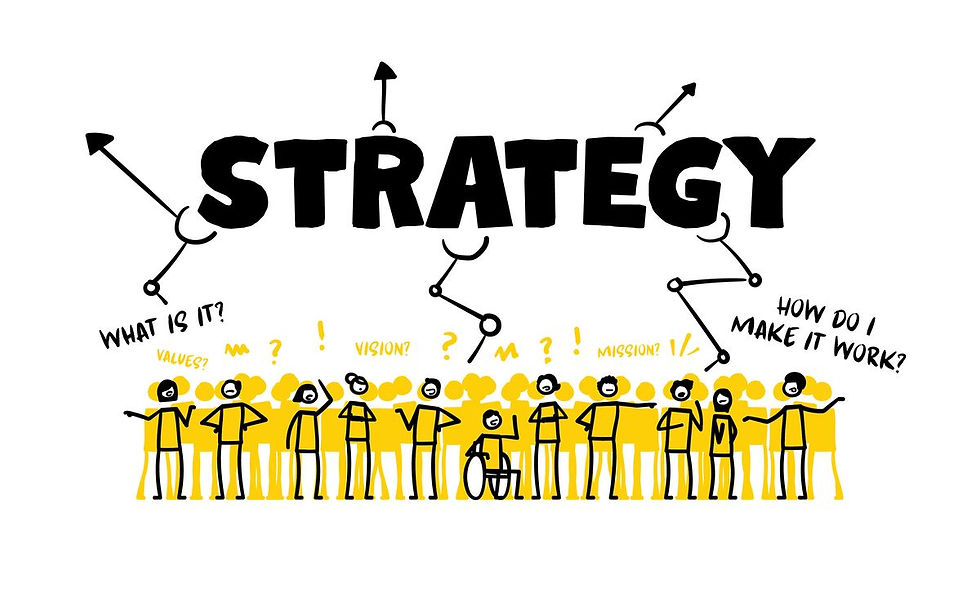How Gen Z Builds Brand Loyalty
- Crsndo.
- Oct 25
- 3 min read
Why loyalty now depends on participation, not repetition.
For previous generations, brand loyalty meant familiarity. For Gen Z, it means belonging. Born between 1997 and 2012, this cohort has rewritten the rules of trust and retention. They buy from brands that align with their values, communicate transparently, and deliver novelty without losing authenticity. According to McKinsey’s Next-Gen Consumer Report 2025, 78 percent of Gen Z shoppers consider brand values before purchase, and 46 percent abandon brands that become “boring or repetitive.”
For growth-oriented businesses, loyalty can no longer be treated as a passive outcome. It must be built intentionally, with strategy, relevance, and ongoing dialogue.
Gen Z loyalty is emotional, dynamic, and conditional.
Gen Z grew up in a world of choice overload and instant gratification. Their loyalty depends on sustained relevance and real alignment. SAP Emarsys’ Customer Loyalty Index 2024 found that nearly half of Gen Z customers have abandoned brands they were once loyal to, primarily due to lack of innovation or authenticity.
Talon One’s Future of Loyalty Study 2025 revealed that 68 percent of Gen Z consumers say purchases reflect their identity and beliefs, while 59 percent expect brands to take public stands on social or environmental issues. Yet, Gen Z is pragmatic. A Deloitte survey found that 60 percent remain loyal to brands that consistently deliver value and convenience, even if they do not lead with activism.
Simplified pattern: Gen Z loyalty is earned through experience, validated through consistency, and maintained through continuous engagement.
Three structural changes define how Gen Z builds and sustains loyalty.
a. Identity replaces inertia
Older generations trusted legacy. Gen Z trusts alignment. They choose brands that mirror their lifestyle and values. A 2025 NielsenIQ study shows that seven in ten Gen Z consumers consider how a brand treats its employees and communities before purchasing.
Implication: Your brand system must express values through design, messaging, and proof. The Strategic Blueprint must translate ethics into tangible action — transparent sourcing, accessible pricing, social inclusion, and honest tone.
b. Participation replaces perks
Traditional point-based loyalty programs are insufficient. Gen Z prefers engagement-driven experiences. According to Accenture’s Digital Experience Index 2025, 65 percent of Gen Z respondents said exclusive content or early access made them feel loyal to a brand, compared to 42 percent who valued discounts.
Brands like Nike and Starbucks have adapted by gamifying interaction and rewarding social sharing. The result is what researchers call “community capital” — loyalty formed through participation rather than purchase.
c. Micro-moments replace mass communication
Gen Z expects constant interaction, not quarterly campaigns. HubSpot’s Social Commerce Report 2025 notes that 73 percent of Gen Z users have interacted directly with a brand through DMs, comments, or live chats, and 48 percent say this level of access makes them more loyal.
Loyalty is no longer a static relationship. It is built in real-time, through micro-moments of recognition and responsiveness.
Three levers to turn Gen Z loyalty into measurable growth.
Audit your loyalty architecture
Evaluate if your current loyalty model is transactional or experiential.
Introduce missions, challenges, or tiered communities that reward contribution and interaction.
Measure engagement frequency, not just repeat purchase rate.
Design for co-creation and transparency
Invite Gen Z audiences to shape campaigns or test new ideas.
Share behind-the-scenes content that humanises your brand.
Publish progress on ethical goals to strengthen long-term trust.
Build emotional continuity
Maintain relevance through constant iteration — content refreshes, limited releases, and value-led storytelling.
Personalise retention journeys using behavioural data.
Integrate loyalty with mobile and social commerce platforms to ensure accessibility.
According to Forrester’s 2025 Global Loyalty Index, brands with engagement-based loyalty systems achieved 2.7 times higher retention among Gen Z audiences than those relying on discounts or static rewards.
Brands that misunderstand Gen Z loyalty face silent churn.
Static loyalty programs reduce engagement and lifetime value.
Inauthentic communication triggers backlash and distrust.
Inconsistent experience breaks continuity between online and in-store touchpoints.
According to PwC’s Customer Retention Benchmark 2025, businesses that failed to modernise loyalty ecosystems saw a 22 percent decline in repeat revenue from Gen Z customers.
Loyalty is no longer a reward for purchase — it is a product of participation.




Comments